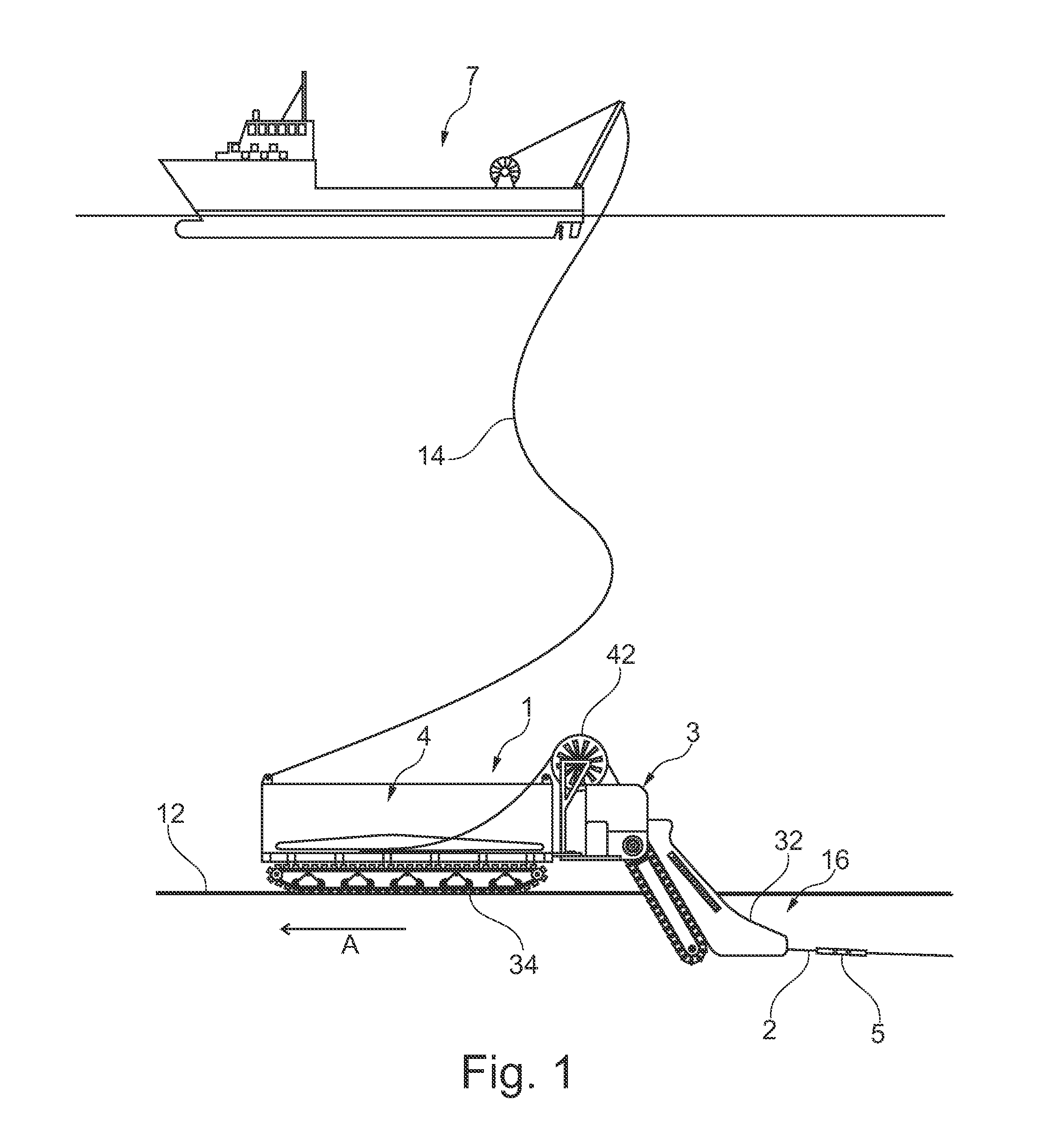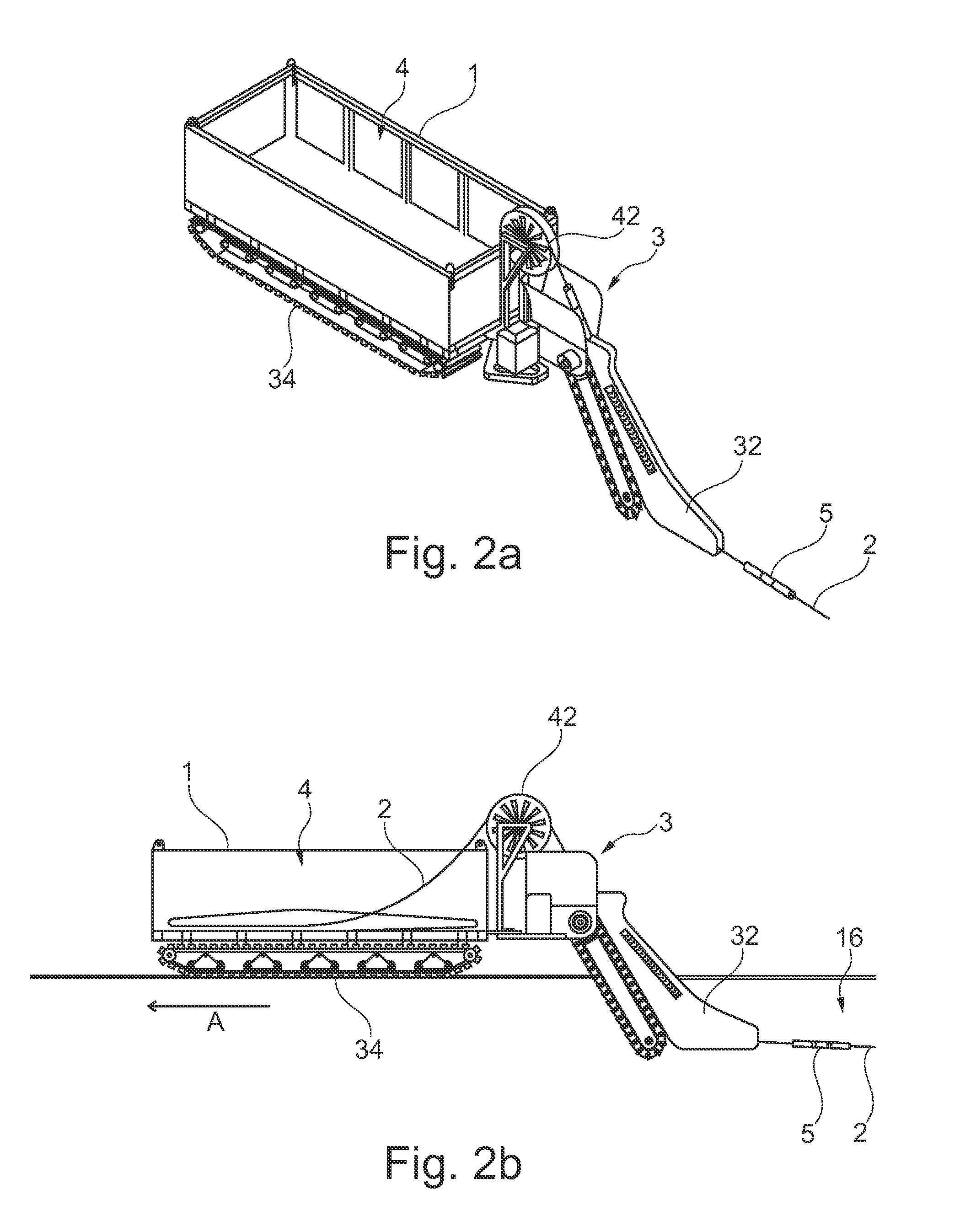System for subsea cable installation
a technology for subsea cables and installation systems, which is applied in the direction of pipe laying and repair, pipe/joints/fittings, soil-shifting machines/dredgers, etc. it can solve the problems of high load, difficult to deploy cable from the vessel, and act on the cable hanging from the deck, so as to reduce the mechanical strain of the cable and avoid the risk of tangled cable
- Summary
- Abstract
- Description
- Claims
- Application Information
AI Technical Summary
Benefits of technology
Problems solved by technology
Method used
Image
Examples
Embodiment Construction
[0038]Referring first to FIG. 1 there is seen a non-limiting schematic side view of a system for subsea installation of elongate flexible element 2 according to a preferred aspect of the invention, wherein a surface vessel 7 is linked to a submersed trenching vehicle 3 via an umbilical cable 14. The umbilical cable 14 supply electric power to the vehicle 3, and provides a telemetry link for control and monitoring of vehicle and its functions so that the trenching vehicle 3 is remotely operable subsea from said surface vessel 7. Further, the trenching vehicle 3 is provided with a container 1 allocating an elongate flexible element 2 intended to be installed into the seabed 12. The elongate flexible subsea element may be a seabed pipe or a cable, such as a seismic cable, for example, having sensor modules 5 distributed rather densely along the cable. Hereinafter said elongate flexible element 2 will be referred to as “cable”. Said sensor modules form an example of an accessory 5 that ...
PUM
 Login to View More
Login to View More Abstract
Description
Claims
Application Information
 Login to View More
Login to View More - R&D
- Intellectual Property
- Life Sciences
- Materials
- Tech Scout
- Unparalleled Data Quality
- Higher Quality Content
- 60% Fewer Hallucinations
Browse by: Latest US Patents, China's latest patents, Technical Efficacy Thesaurus, Application Domain, Technology Topic, Popular Technical Reports.
© 2025 PatSnap. All rights reserved.Legal|Privacy policy|Modern Slavery Act Transparency Statement|Sitemap|About US| Contact US: help@patsnap.com



